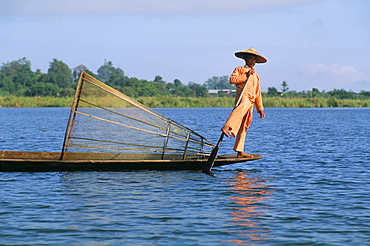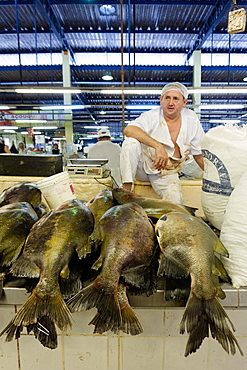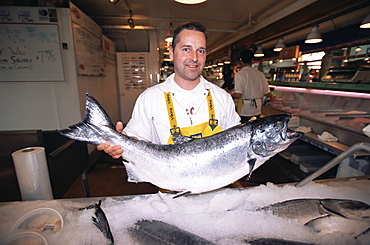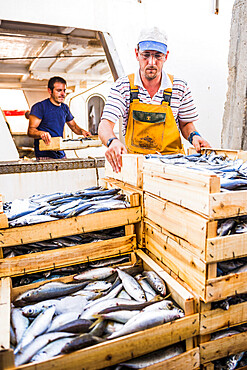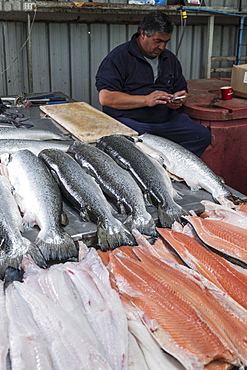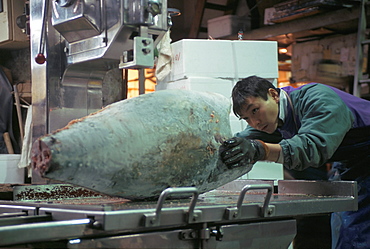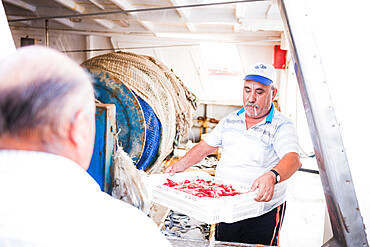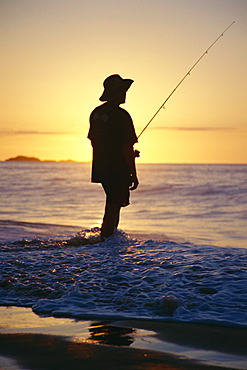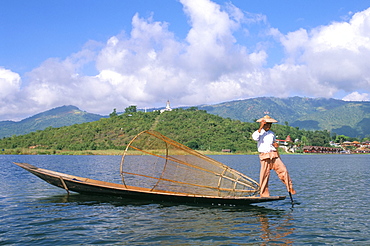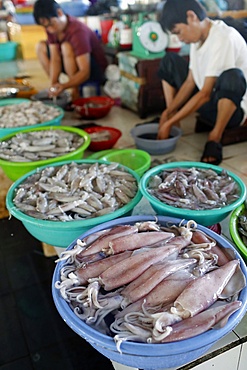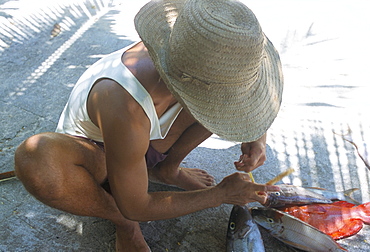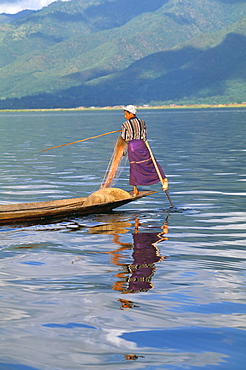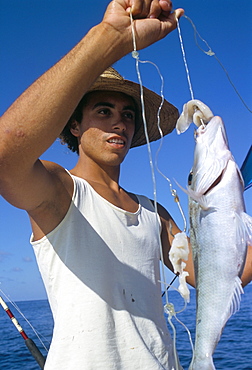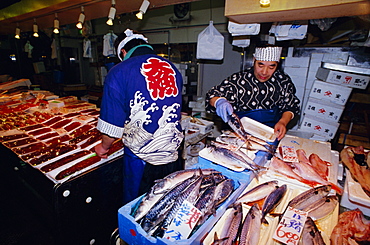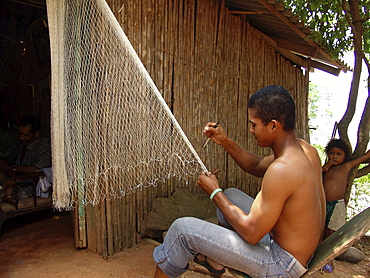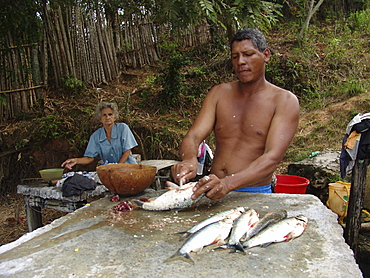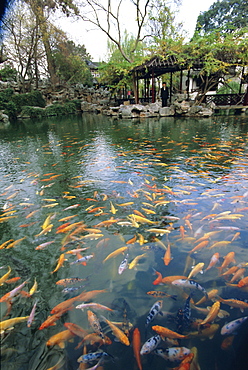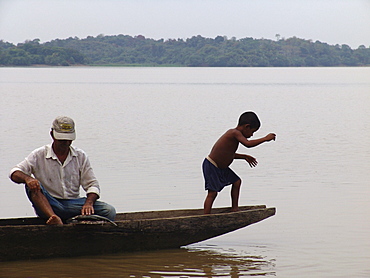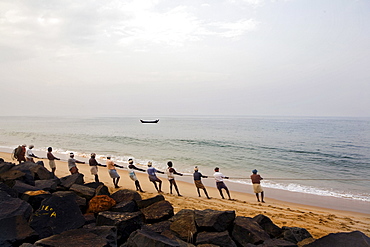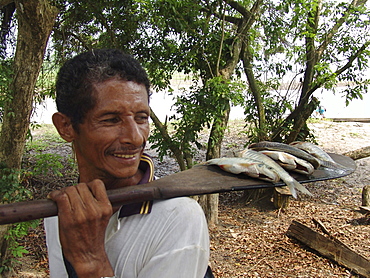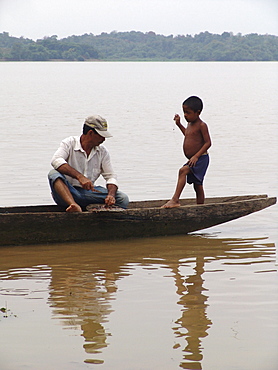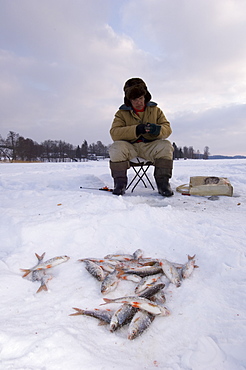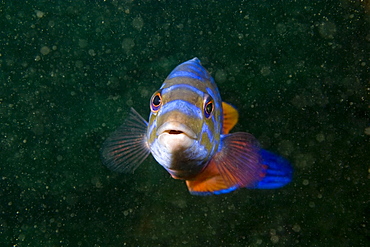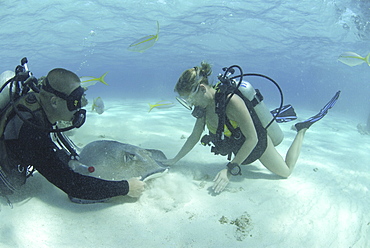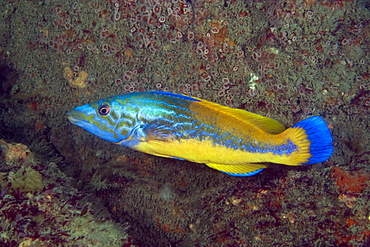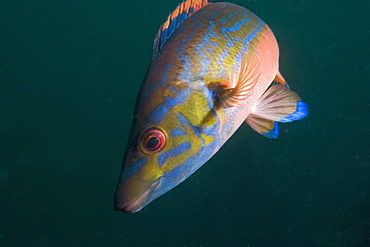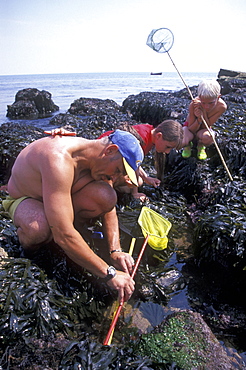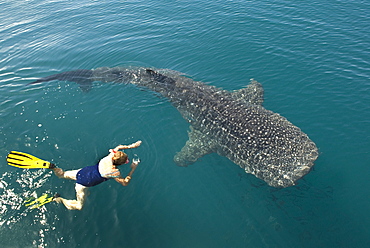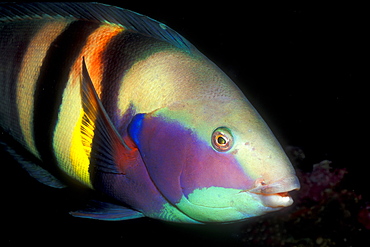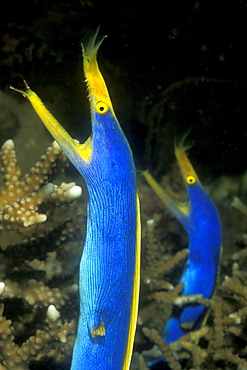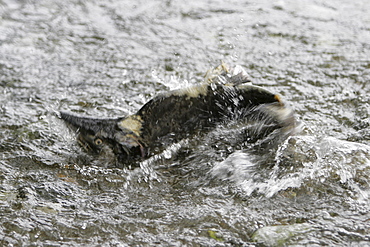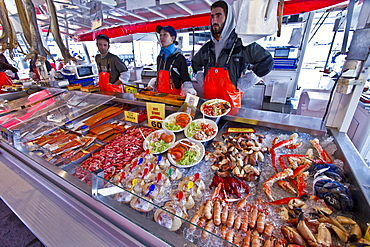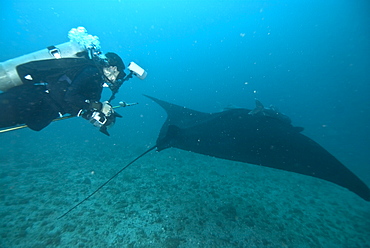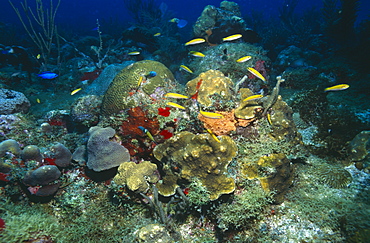Results
« Previous 1 2 3 4
322 results found
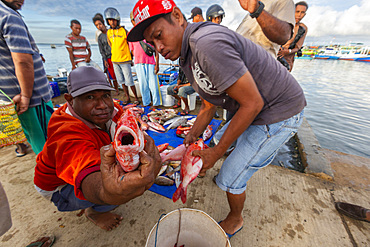
Vendors selling fresh fish at the fish market in Sorong, the largest city of the Indonesian province of Southwest Papua, Indonesia, Southeast Asia, Asia
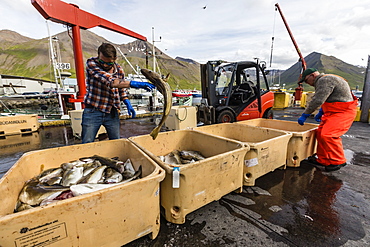
Sorting freshly caught fish in Siglufjorour, Siglufjordur, off the north coast of Iceland, Polar Regions
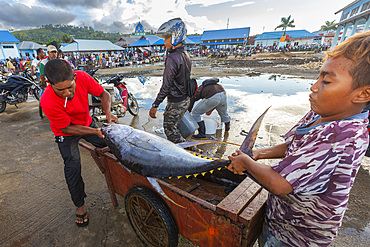
Vendors selling fresh fish at the fish market in Sorong, the largest city of the Indonesian province of Southwest Papua, Indonesia, Southeast Asia, Asia
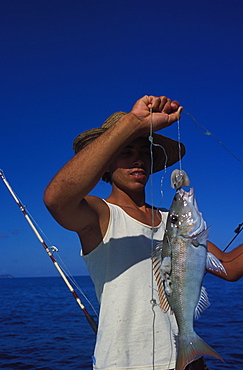
Young man with fish caught on a line, northeast coast, island of Praslin, Seychelles, Indian Ocean, Africa
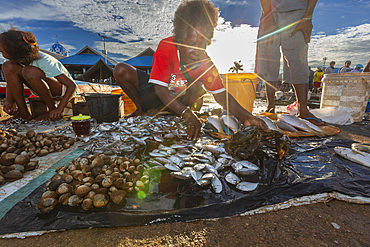
Vendors selling fresh fish at the fish market in Sorong, the largest city of the Indonesian province of Southwest Papua, Indonesia, Southeast Asia, Asia
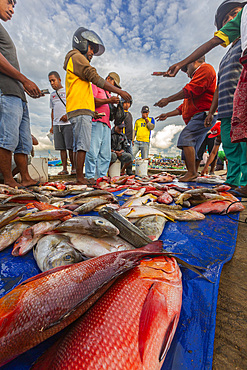
Vendors selling fresh fish at the fish market in Sorong, the largest city of the Indonesian province of Southwest Papua, Indonesia, Southeast Asia, Asia
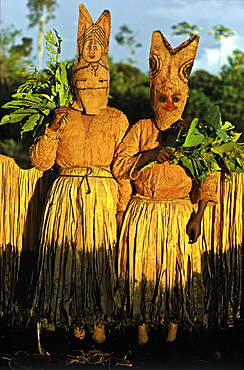
Wearing tree bark cloth masks and skirts, dancers representing fish spirits are invited during the season of the peach palm harvest to drink the juice. it is a feast and ritual exchange: the host group offers the spirits large quantities of peach palm juice, smoked meat and fish, and shaman-blessed coca and snuff. the visitors are the costumed dancers impersonating animal spirits. people eat the meat and fish, animal spirits receive the fruits of peach palm, which are cultivated, harvested, and processed by humans. this exchange expresses the idea that people and animals depend on each other for survival and reproduction. vaupes basin, eastern colombia amazon, population: 600
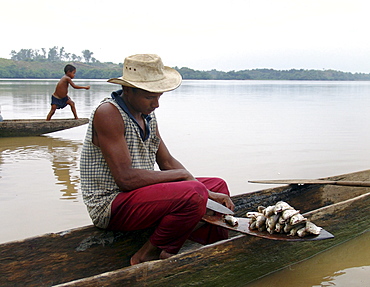
Colombia fisherman cleaning fish while he sits in his dugout canoe. A boy fishing with a line in the background. Rio magdalena, barrancabermeja

CAMBODIA Sovat Komsonath (29) fishing in the Sekong River, Ban Bung village, Stung Treng district. In this image he is casting his net

Indonesia crs housing project at seunebok tuengoh relocation site. zaman, a fisherman, smoking fish, with his wife habibah. meulaboh, aceh, two years after the tsunami

Indonesia crs housing project at seunebok tuengoh relocation site. zaman, a fisherman, smoking fish. meulaboh, aceh, two years after the tsunami
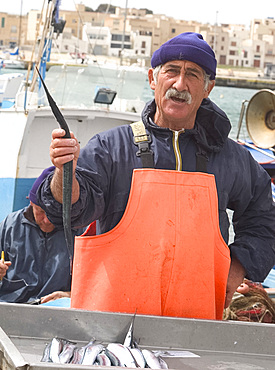
A fisherman on the island of Favignana in the Egadi Islands, off the coast of Sicily, Italy, Mediterranean, Europe

Large male Mozambique tilapia (Oreochromis mossambicus), Hawaii Institute of Marine Biology, Kaneohe, Oahu, Hawaii, United States of America, Pacific

Large male Mozambique tilapia (Oreochromis mossambicus), Hawaii Institute of Marine Biology, Kaneohe, Oahu, Hawaii, United States of America, Pacific

Large male Mozambique tilapia (Oreochromis mossambicus), Hawaii Institute of Marine Biology, Kaneohe, Oahu, Hawaii, United States of America, Pacific
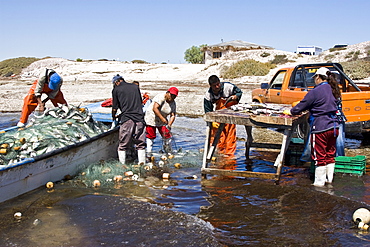
Three generations of Mexican fisherman work to pick, sort, and clean a huge catch from their gill net in San Ignacio Lagoon, Baja California Sur, Mexico
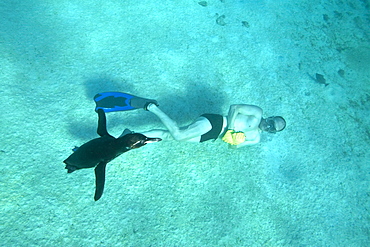
Adult Galapagos penguin (Spheniscus mendiculus) hunting fish underwater near snorkeler in the Galapagos Island Group, Ecuador

Three generations of Mexican fisherman work to pick, sort, and clean crabs from their gill net in San Ignacio Lagoon, Baja California Sur, Mexico
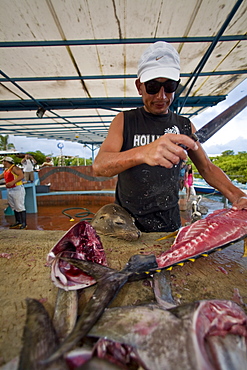
Scenes from around the small town of Puerto Ayora on Santa Cruz Island, Galapagos, Ecuador. Pacific Ocean. No model or property releases are available for this image.

Northern (Steller) sea lion (Eumetopias jubatus) close-up eating a small skate in Southeastern Alaska, USA
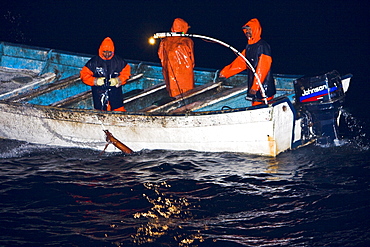
Night fishery for Humbolt Squid (Dosidicus gigas) in the Gulf of California (Sea of Cortez) waters just outside Santa Rosalia, Baja California Sur, Mexico
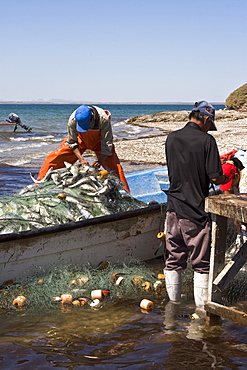
Three generations of Mexican fisherman work to pick, sort, and clean a huge catch from their gill net in San Ignacio Lagoon, Baja California Sur, Mexico
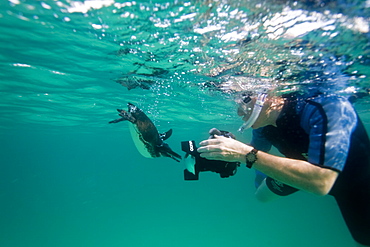
Adult Galapagos penguin (Spheniscus mendiculus) hunting fish underwater in the Galapagos Island Group, Ecuador
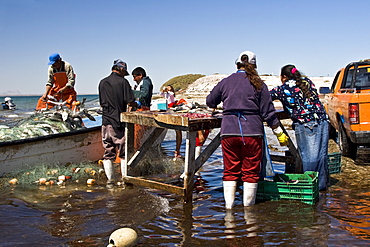
Three generations of Mexican fisherman work to pick, sort, and clean a huge catch from their gill net in San Ignacio Lagoon, Baja California Sur, Mexico
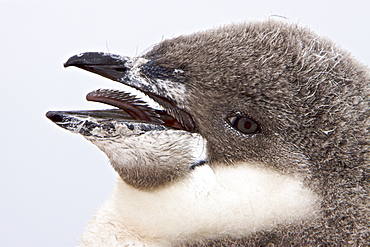
Chinstrap penguin (Pygoscelis antarctica) chick head detail at colony on Useful Island near the Antarctic Peninsula. There are an estimated 2 million breeding pairs of chinstrap penguins in the Antarctic peninsula region alone, perhaps as many as 7.5 million breeding pairs in all of Antarctica. Their name derives from the narrow black band under their heads which makes it appear as if they are wearing black helmets, making them one of the most easily identified types of penguin. Other names for them are "Ringed Penguins", "Bearded Penguins", and "Stonecracker Penguins" due to their harsh call. They grow to 68 cm (27 in). The average adult weight of a Chinstrap Penguin is 4.5 kg (10 lbs). Weight can range from 3 to 6 kg (6.6-13.2 lbs), with males being slightly larger and weight varying based on where the penguin is in the breeding cycle. Their diet consists of krill, shrimp, and fish. On land they build circular nests from stones, and lay two eggs, which are incubated by both the male and the female for shifts of five to ten days. They can also breed on icebergs, though they prefer non-icy conditions. The chicks hatch after about 35 days, and have fluffy gray backs and white fronts. The chicks stay in the nest for 20?30 days before they go to join a creche. At around 50?60 days old, they moult, gaining their adult plumage and go to sea. The Chinstrap Penguin was first described by German naturalist Forster in 1781. Its specific epithet was often seen as antarctica, however a 2002 review determined the genus Pygoscelis was masculine, and hence the correct binomial name is Pygoscelis antarcticus.
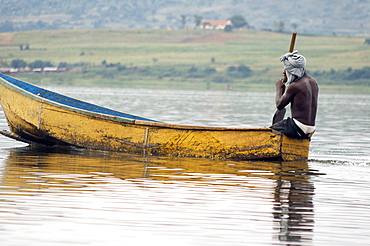
With such demands for Lake Victoria's Nile perch, the value of the fishery has risen considerably. Labour inflows into the fishery have increased along with growing demand. In 2004, there were 51,712, boats on the lake and 153,066 fishermen. Jinja, Uganda, East Africa
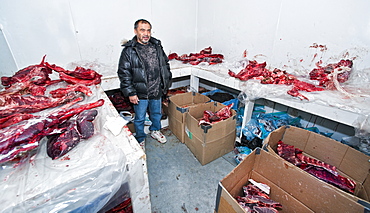
Local Inuit man, in freezer house. Kangiqsujuaq, Quebec, Nunavik, Canada, North America .Everything from Arctic Char (fish) to Reindeer, Polarbear and whale meat is stored in the freezer house, in which certain town members can access and store hunted foods and skins.
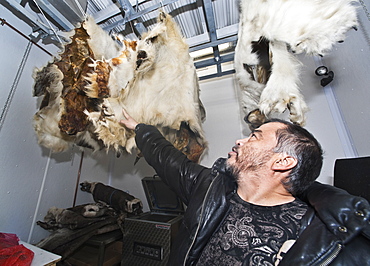
Local inuit man, in freezer house pointing to Polar Bear skins. Kangiqsujuaq, Quebec, Nunavik, Canada, North America .Everything from Arctic Char (fish) to Reindeer, Polarbear and whale meat is stored in the freezer house, in which certain town members can access and store hunted foods and skins. Polar bears often come into the local communities, if one is a persistent threat, they will kill it. Individuals can also hunt polar bears on quota.

Eider duck (Somateria mollissima), male and juvenile swimming past a fish farm, tend to raft there in the winter.
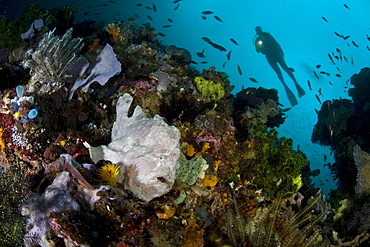
Giant frogfish (Antennarius commersoni) and diver. Cannibal Rock, Horseshoe Bay, Rinca Island, near Komodo, Indonesia.

Research diver approaching manta birostris to record detail in research program, Project Elasmo. Pacific Ocean, Ecuador
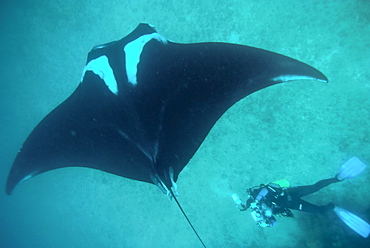
Research diver approaching manta birostris to record detail in research program, Project Elasmo. Pacific Ocean, Ecuador

western king wrasse (coris auricularis), male, dark pink colour with reddish-brown band running around boby and blue-green colouration over the head, wild, day, marine protected area, diving off Rottnest Island, reef edges, sand, seagrass, Western Australia, Indian Ocean. MORE INFO: social structure where dominant male, usually the biggest in the area, will have a harem of females. When the male dies or is absent for any length of time the largest female will change sex and dominate the group.
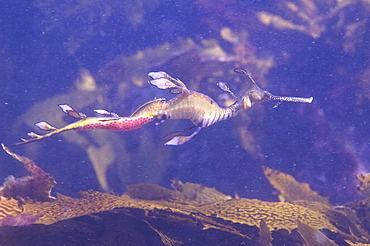
common seadragon (phyllopteryx taeniolatus) voracious hunters, camouflage looking like a piece of floating weed, unique to Australia, wild, dusk, shore diving, sand, marine park, metropolitan, Perth city, Indian Ocean, cool temperate waters of Western Australia. MORE INFO: amongst kelp, female seadragon deposits up to 150 eggs into the spongy, soft tissue under the tail of the male seadragon. Once fertilised, eggs incubate about 8 weeks. On hatching, miniature seadragons are independent and will start eating almost immediately.
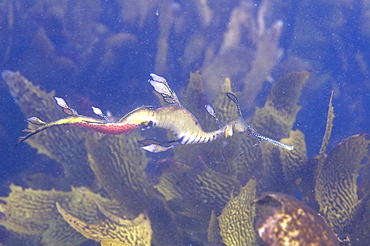
common seadragon (phyllopteryx taeniolatus) voracious hunters, camouflage looking like a piece of floating weed, unique to Australia, wild, dusk, shore diving, sand, marine park, metropolitan, Perth city, Indian Ocean, cool temperate waters of Western Australia. MORE INFO: amongst kelp, female seadragon deposits up to 150 eggs into the spongy, soft tissue under the tail of the male seadragon. Once fertilised, eggs incubate about 8 weeks. On hatching, miniature seadragons are independent and will start eating almost immediately.

Cuckoo Wrasse (Labrus bimaculatus or L.mixtus) Male.
Cornwall, UK
Restricted resolution (Please contact us) (RR)
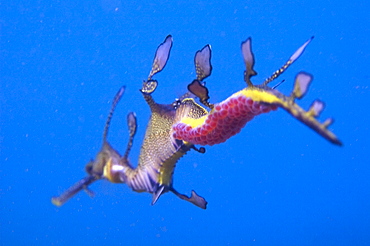
common seadragon (phyllopteryx taeniolatus) voracious hunters, camouflage looking like a piece of floating weed, unique to Australia, wild, dusk, shore diving, sand, marine park, metropolitan, Perth city, Indian Ocean, cool temperate waters of Western Australia. MORE INFO: blue water, female seadragon deposits up to 150 eggs into the spongy, soft tissue under the tail of the male seadragon. Once fertilised, eggs incubate about 8 weeks. On hatching, miniature seadragons are independent and will start eating almost immediately.
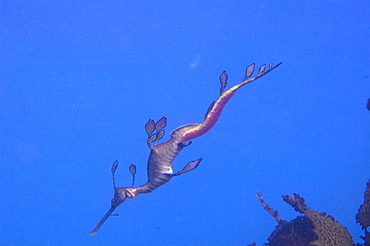
common seadragon (phyllopteryx taeniolatus) voracious hunters, camouflage looking like a piece of floating weed, unique to Australia, wild, dusk, shore diving, sand, marine park, metropolitan, Perth city, Indian Ocean, cool temperate waters of Western Australia. MORE INFO: amongst kelp, female seadragon deposits up to 150 eggs into the spongy, soft tissue under the tail of the male seadragon. Once fertilised, eggs incubate about 8 weeks. On hatching, miniature seadragons are independent and will start eating almost immediately.
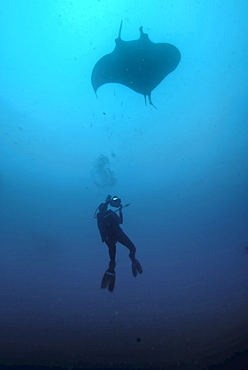
Research diver approaching manta birostris to record detail in research program, Project Elasmo. Pacific Ocean, Ecuador

Research diver approaching manta birostris to record detail in research program, Project Elasmo. Pacific Ocean, Ecuador
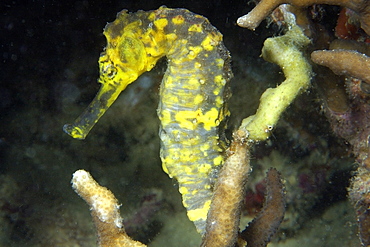
Tigertail seahorse (Hippocampus come) male, Malapascua, Northern Cebu, Philippines, Visayan Sea, Southeast Asia, Asia
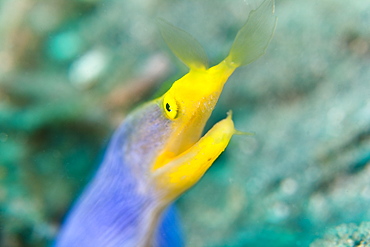
Ribbon eel, Rhinomuraena quaesita, male. This species is a protandrous hermaphrodite changing from male to female and found throughout the Indo-Pacific. Lembeh Strait, North Sulawesi, Indonesia, Pacific Ocean.

Research diver approaching manta birostris to record detail in research program, Project Elasmo. Pacific Ocean, Ecuador
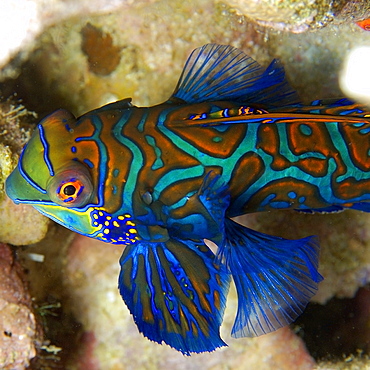
Mandarinfish (Synchiropus splendidus) male, Malapascua, Cebu, Philippines, Visayan Sea, Southeast Asia, Asia
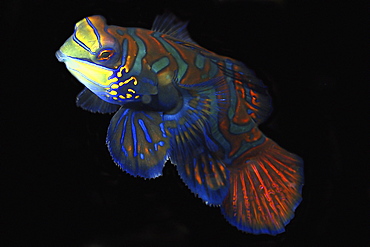
Mandarinfish (Synchiropus splendidus) male, Malapascua, Cebu, Philippines, Visayan Sea, Southeast Asia, Asia

Scenes from around the small town of Puerto Ayora on Santa Cruz Island, Galapagos, Ecuador. Pacific Ocean. No model or property releases are available for this image.
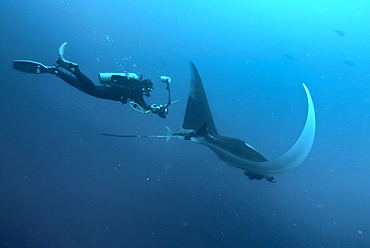
Research diver approaching manta birostris to record detail in research program, Project Elasmo. Pacific Ocean, Ecuador
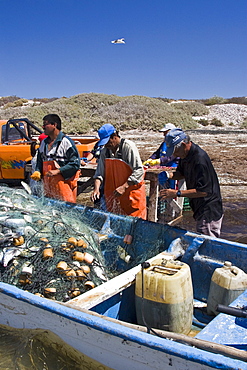
Three generations of Mexican fisherman work to pick, sort, and clean a huge catch from their gill net in San Ignacio Lagoon, Baja California Sur, Mexico
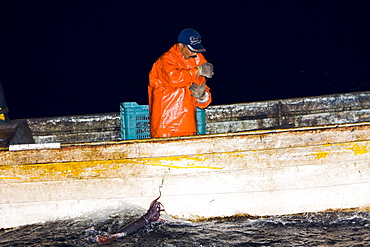
Night fishery for Humbolt Squid (Dosidicus gigas) in the Gulf of California (Sea of Cortez) waters just outside Santa Rosalia, Baja California Sur, Mexico

Three generations of Mexican fisherman work to pick, sort, and clean crabs from their gill net in San Ignacio Lagoon, Baja California Sur, Mexico
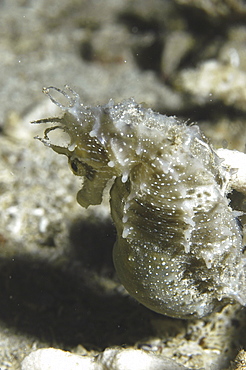
Long-snout Sea Horse (Hoppocampus ramulosus) pregnant male with eggs in brood pouch, Malta, Mediterranean

Night fishery for Humbolt Squid (Dosidicus gigas) in the Gulf of California (Sea of Cortez) waters just outside Santa Rosalia, Baja California Sur, Mexico

Northern (Steller) sea lion (Eumetopias jubatus) close-up eating a halibut in Southeastern Alaska, USA
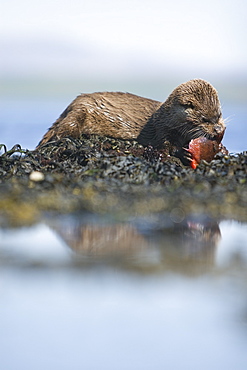
Eurasian river otter (Lutra lutra) eating a male lumpsucker (Cyclopterus lumpus) fish, also known as a sea hen or scarclagger. Hebrides, Scotland
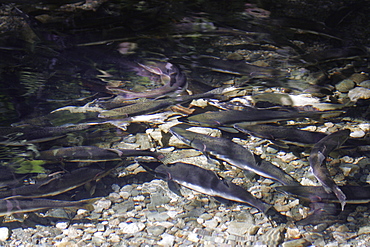
Adult male and female pink salmon (Oncorhynchus gorbuscha - nicknamed the "Humpbacked salmon") spawning in a stream in southeast Alaska, USA.

Scenes from the fish market in the port town of Puerto Ayora, Santa Cruz Island, Galapagos Island Archipelago, Ecuador
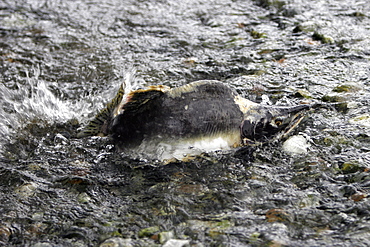
Adult male pink salmon (Oncorhynchus gorbuscha - nicknamed the "Humpbacked salmon") struggling to swim upstream to spawn in a stream in southeast Alaska, USA.

Lyretail Anthias (Pseudanthias Squamipinnis) Male, Under water , diving, Hurghada, Red Sea, Egypt, Africa.

Research diver approaching manta birostris to record detail in research program, Project Elasmo. Pacific Ocean, Ecuador
